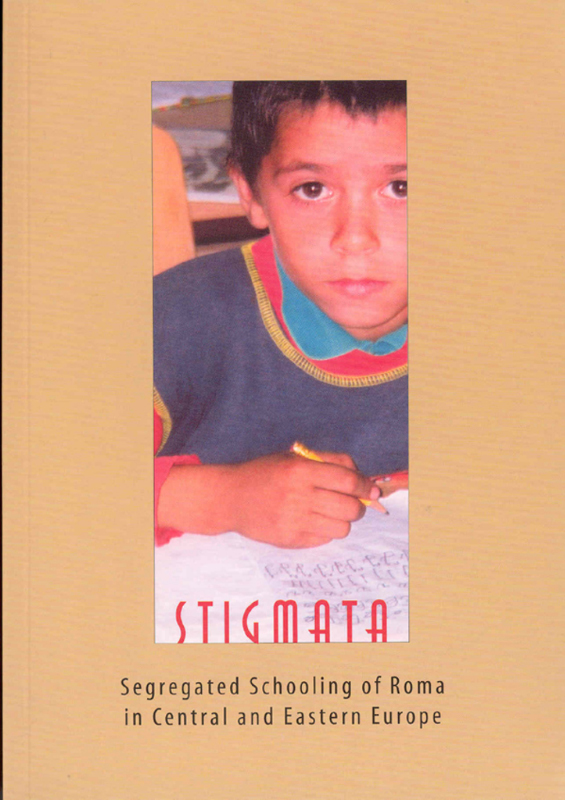Stigmata: Segregated Schooling of Roma in Central and Eastern Europe
02 May 2004
Stigmata: Segregated Schooling of Roma in Central and Eastern Europe
 Racial segregation of Roma in education in Central and Eastern Europe has persisted if not worsened, causing irreparable harms to generations of Roma. Roma have been raised with the stigma of inferiority. Numerous Roma have been denied equal education and life opportunities. They have been prevented from enjoying the benefits of studying and living in a multicultural society. Segregated schooling of Roma is a complex phenomenon which has emerged as a result of the interplay of a number of factors such as deep-seated anti-Romani racism, the indifference of the educational systems to cultural diversity, and a lack of effective protections against discrimination and equal opportunity policies. In some places, segregated school facilities for Roma appeared as a result of patterns of residential segregation. Racial segregation has also arisen as a result of the exclusion of Roma by virtue of their specific language and culture. Finally, racial segregation has resulted from the conscious efforts of school and other officials to separate Romani children from non-Romani children for reasons ranging from their personal dislike of Roma to responding to pressure from non-Roma.
Racial segregation of Roma in education in Central and Eastern Europe has persisted if not worsened, causing irreparable harms to generations of Roma. Roma have been raised with the stigma of inferiority. Numerous Roma have been denied equal education and life opportunities. They have been prevented from enjoying the benefits of studying and living in a multicultural society. Segregated schooling of Roma is a complex phenomenon which has emerged as a result of the interplay of a number of factors such as deep-seated anti-Romani racism, the indifference of the educational systems to cultural diversity, and a lack of effective protections against discrimination and equal opportunity policies. In some places, segregated school facilities for Roma appeared as a result of patterns of residential segregation. Racial segregation has also arisen as a result of the exclusion of Roma by virtue of their specific language and culture. Finally, racial segregation has resulted from the conscious efforts of school and other officials to separate Romani children from non-Romani children for reasons ranging from their personal dislike of Roma to responding to pressure from non-Roma.
ERRC has undertaken field research in five countries, documenting empirical facts about separate education of Roma as well as practices by educational authorities which aim at or result in the segregation of Roma in schools. On the basis of existing data and information provided by educational authorities, Romani parents and children, as well as other individuals with relevant expertise, the ERRC report describes the most common practices of segregating Romani children in education based on their ethnicity. These include segregation in so-called "special schools" for children with developmental disabilities, segregation in Romani ghetto schools, segregation in all-Romani classes, denial of enrolment of Romani children to mainstream schools, as well as other phenomena. Whatever the particular form of separate schooling, the quality of education provided to Roma is invariably inferior to the mainstream educational standards in each country.
The report concludes with the ERRC recommendations for governmental policy. The complexity of the issue of segregated schooling of Roma calls for a thorough-going legal and educational policy reform. The desegregation of Romani education and the prevention of further segregation should be the core of governmental educational policies towards the achievement of equal educational opportunities. The outcome of the desegregation action should be:
- phasing out of the remedial special schools for children with developmental disabilities and integration of the students from these schools into mainstream schools;
- mandatory first year enrolment in mainstream classes no more first year students in remedial special or other separate and substandard classes and/or schools;
- enrolment in mainstream secondary education of graduates from primary special schools and ensuring their successful adaptation;
- elimination of all-Romani schools, pre-school facilities and classes;
- achievement of racial/ethnic balance in the composition of the student bodies in the schools and classes in each municipality comparable to the demographic characteristics of the respective municipality.
The report is the result of research undertaken in 2002-2003 with specific project support from the Human Rights Project Fund of the Foreign and Commonwealth Office of the United Kingdom, as well as with core funding from the Open Society Institute, the Ford Foundation and the Ruben and Elisabeth Rausing Trust.




